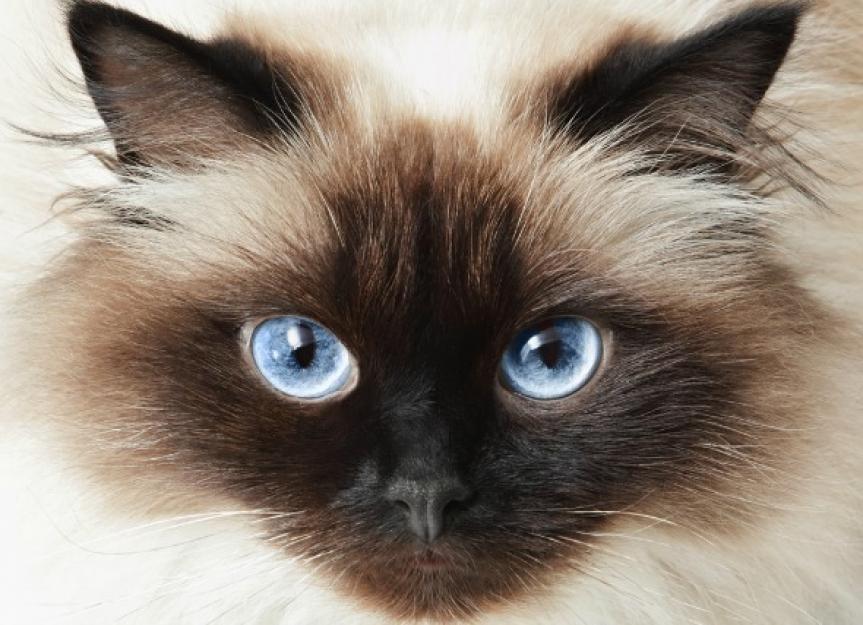黑点在猫的眼睛
Corneal Sequestrum in Cats
Corneal sequestrum occurs when the cat has dead corneal tissue (or dark spots in the cornea). It usually is caused by chronic corneal ulceration, trauma, or corneal exposure. Corneal sequestrum can affect all breeds, but is more prone in Persian and Himalayan breeds. In cats, it usually begins during their middle-aged years.
Symptoms and Types
The dark spots in your cat's cornea may remain unchanged for long periods of time, and then suddenly get worse. Listed below are some other symptoms your cat may experience:
- Discoloration of the affected corneal area (in one or both eyes), ranging from a translucent golden-brown color (early stages) to an opaque black
- Chronic non-healing corneal ulcer
- Abnormal corneal cell formation, which may cause the area to swell and protrude
- Episodes of feline herpesvirus-1 (FHV-1)
- Dry eyes
- Eyelid twitches and/or ocular discharge; clear to brownish-black mucus or puss
- Blood in the outer surface of the eye and swelling
- Constriction of the pupil
Causes
The exact cause of the condition is unknown; however, the following is a list of potential risk factors:
- Chronic corneal ulceration
- Chronic irritation
- Ingrown eyelashes or entropion (eyelids fold inward)
- Shortened nose and face conformation (i.e, Persian and Himalayan breeds)
- Incomplete blink
- Dry-eye syndrome
- 泪膜障碍
- Feline herpesvirus-1 infection
- Topical drug use (i.e., corticosteroids)
- Recent surgery
Diagnosis
- Corneal perforation/iris has moved — protruding iris is fleshy, and its color ranges from yellow to light brown.
- Corneal pigmentation — rare in cats
- Corneal tumor — a benign tumor occurs at the border of the cornea; it is not typically painful
- Corneal foreign body
Treatment
Treatment will depend on the lesion's depth and the degree of ocular pain for your cat. The blemish may spontaneously separate itself from the surrounding tissue (slough), so timing is important. If you decide to wait to proceed with treatment, supportive care is necessary.
Your veterinarian may try to avoid surgery. If the pain persists for months, however, it could lead to corneal perforation. Therefore, some surgical options include:
- Lamellar keratectomy, which removes thin layers of the corneal tissue. If performed early, it can rapidly relieve pain and promote faster corneal healing. It may also prevent the lesion from affecting the deeper corneal connective tissue.
- Corneal grafting procedures should be performed if more than 50 percent of the corneal connective tissue has been removed
- Postoperative corneal ulcer management with a broad-spectrum topical antibiotic, atropine ointment, and a tear supplement.
Living and Management
If the corneal sequestrum is managed with medications, your pet will need to be examined weekly. This is to watch for complications, such as the lesion separating itself from the surrounding tissue. If your cat undergoes the keratectomy procedure, its eye should be re-evaluated every seven to ten days, or until the corneal defect has healed.
There is also a high probability that the condition may spread to the other eye. Cats which produce small amounts of tears, have thick lesions or those that do not have the pigmented corneal tissue removed, may also have recurring problems with this condition.
Help us make PetMD better
Was this article helpful?
